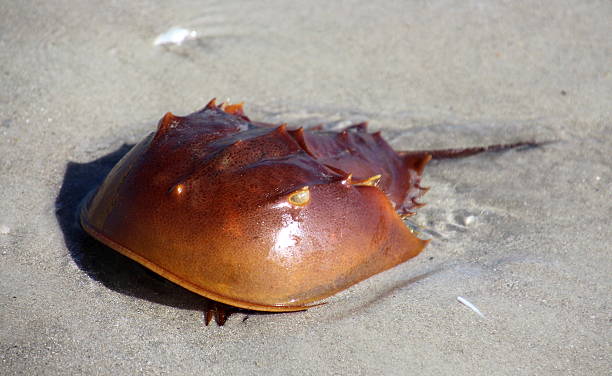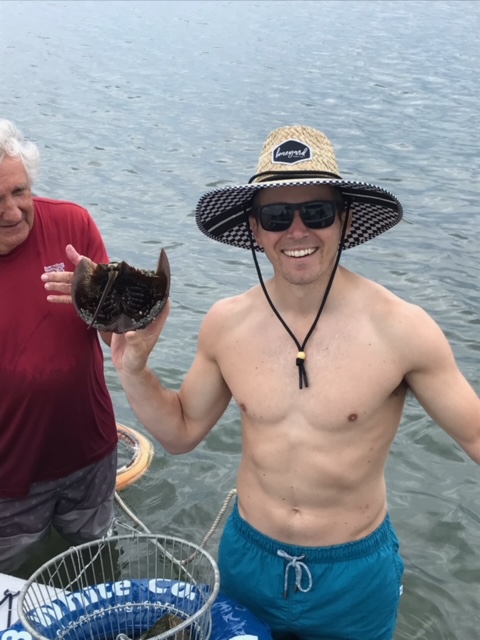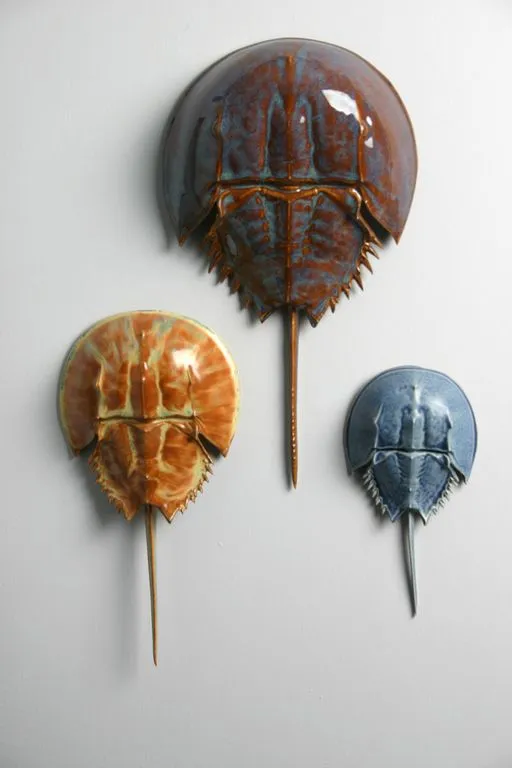One of the craziest, almost Neanderthal, fossil looking creatures on the planet is the horseshoe crab. They remain plentiful along the Atlantic coast, including the island of Chappaquiddick on Martha’s Vineyard.

My son, Guy, did some research on the horseshoe crab recently during our trip to Chappaquiddick – some research that I would like to share with you.

It turns out that the horseshoe crab is fascinating! In addition to its very unusual look, this creature will blow your mind for several reasons.

- These critters predate the dinosaurs. They are estimated to be 445 million years old! They are resilient.
- They are more closely related to spiders, scorpions and ticks than to crabs.
- They do not have a jaw. They cannot chew. Their front legs are more like pincers, which crush their food to make it easier to consume.
- Despite their sting ray looking tail, they are not dangerous at all. The tail is used more like a rudder. It is not true that the tail allows the horseshoe crab to right itself if it finds itself upside down.
- When a female horseshoe crab spawns, she really lays a lot of eggs. When it’s time to lay her eggs, she will lay up to around 20,000 eggs in one night and up to some 100,000 in each mating season!
- Nevertheless, some endangered species agencies list the horseshoe crab as “vulnerable” because so few of these hundreds of thousands of eggs survive, since the eggs serve as an important food source for many other creatures including migratory birds and turtles.
- They can swim upside down.
- They can see really well. They have 9 eyes.
- It takes 10 years for a young horseshoe crab to become an adult. During those years, as it grows, its shell (which is smooth and looks like a horseshoe) does not grow with the critter. As a result, the crab has to molt the shell (i.e., shed the existing shell and develop a new and bigger one). It will do this some 16 times during its first 10 years!

My daughter Kelsey holding the shell of a horseshoe crab.
But most importantly, the horseshoe crab is well known in the medical community for the roles that it plays.
- For example, the shell of a horseshoe crab is made primarily of chitin, which, when used as a coating for suture material and burn dressings, dramatically shortens the time required for wound healing by 50%.
- Studies involving the nerve pathways in the eyes of horseshoe crabs have led to many discoveries in human eye research.
- The horseshoe crab’s blood is very valuable ($60,000 per gallon). All pharmaceutical companies worldwide rely on the horseshoe crab’s blood.
- The blood-clotting ability of the horseshoe crab makes it very valuable in testing for vaccines, injectable medicines, and sterile medical equipment.
- Its blue blood provides the only known natural source of limulus amebocyte lysate, a substance that detects a contaminant called endotoxin.
- Death can result if even tiny amounts of endotoxin—a type of bacterial toxin—turn up in vaccines, injectable drugs, or other sterile pharmaceuticals such as artificial knees and hips.

in addition, some people (i.e., yours truly) have made the shells of horseshoe crabs into art work on the walls of their abode.

Bottom line, thank goodness for horseshoe crabs!
Have lived with these guys all my life—and respected them! Baze Whiting
Wow! Truly very interesting facts! They say you should learn one new thing a day. Your blog provided so many facts that hopefully I will keep a few in my memory bank. Thanks, Neil🤗
Wow, lots of interesting facts. Thank you for more knowledge.
Neil, Thanks for sharing this information. Very interesting, and I learned somuch about this creature. Seems like they come in all sizes and colours. Here on this coast, I have never seen one, yet, but now will keep. It in mind to look. You are always a wealth of knowledge, and you love sharing. Thanks so much for all your blogs.Always so interesting. When you are in B.C. Remember to stop by for a visit. We just got back from Campbell River. What a delightful community.
Once again, you made something I would never have thought of very interesting and wanting to know more. While reading your post, it made me feel that there are many wonderous things happening around us everyday, Thanks again Neil for doing that. I never gave allot of thought to horseshoe grabs before.